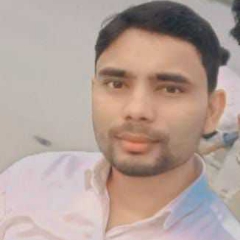Question 2 :
Which of the following were product/products of distant places from the towns in the subcontinent from the 8th century onwards?
Question 4 :
As per a 10th-century inscription found in Rajasthan, there were taxes on _________.
Question 5 :
From the eighth century onwards, the hattas or haats emerged in several small towns which were __________.
Question 7 :
As per the 10th-century Inscription found in Rajasthan, taxes were collected in _________.
Question 9 :
Which of the following was the capital of Chauhan Kings in twelfth century?<br/>
Question 12 :
Limestone cement, a very high quality cement was used during the twelvth century for the construction of which of the following structures?<br>
Question 13 :
The ceremonial halls of public and private audience were called as __________ during the Mughal period.
Question 14 :
Which of the following is the example of a craft persons skills?
Question 15 :
During the _________ dynasty, the Kandariya Mahadeva temple dedicated to Shiva was constructed in 999 AD by _____________.<br/>
Question 16 :
<p>Between the eighth and thirteenth centuries, which style of architecture was used in the construction of temples, mosques, and tombs?</p>
Question 17 :
The Bangla Dome, an architectural feature adopted by the Mughals, was actually a ________.
Question 19 :
The structures built between the eighth and the Eighteenth Century were mainly for ________.
Question 20 :
With respect to Mughal architecture, what does the term 'diwan-i-khas' refer to?
Question 21 :
The structures built between the eight and the eighteenth Century were built by ________
Question 22 :
Trabeate style was used in construction of which of the following?<br>
Question 24 :
Between the ____ and ____ centuries architects started adding more rooms, doors and windows tobuildings.
Question 25 :
How many kinds of structures were build by Kings in between the eighth and the eighteenth centuries?<br>
Question 26 :
During the reign of which Mughal ruler the cities of Agra and Delhi witnessed a huge amount of construction activity? <br>
Question 30 :
Formal gardens, placed within rectangular walled enclosures and divided into four quarters by artificial channels were called as __________.
Question 31 :
Placing a horizontal beam across two vertical columns, this style of architecture is called as?<br>
Question 32 :
The Gol Gumbaz at Bijapur in Karnataka was built in the 17th Century.
Question 33 :
Identify the world famous examples of Islamic architecture of India from the following list.
Question 35 :
The architectural style of the churches during the middle ages was known as the _______ style of architecture.
Question 36 :
What variation was introduced to the 'Chahar bagh format' during the reigh of Shah Jahan?
Question 38 :
In the Ahom state those who were forced to work for the state were called as ____________.
Question 39 :
As per a twelfth-century inscription from Uyyakondan Udaiyar, in Tiruchirapalli taluka, which of the following jobs were assigned to the Rathkaras?
Question 41 :
The tribe of people who came to India with characteristics like dark color, height of 4 to 5 feet and curly hair were ______.<br/>
Question 45 :
Among the functions of the Panch are the fixing of the dates of major festivals, ___________.
Question 46 :
The Ahoms migrated to the _________ valley from the present day Myanmar in the 13th century.<br>
Question 48 :
A twelfth-century inscription from Uyyakondan Udaiyar, in _________, describes the deliberations in a sabha of Brahmanas.
Question 49 :
A twelfth-century inscription from Uyyakondan Udaiyar,in Tiruchirapalli taluka (in present-day Tamil Nadu),describes the deliberations in a ________ ofBrahmanas.
Question 52 :
As per the twelfth-century inscription, the Job of the Rathkaras was __________.
Question 54 :
As the _________ and the needs of society grew, peoplewith new skills were required.
Question 55 :
The dominant tribes of Punjab, Sindh, and North-West Frontier province adopted _________.
Question 56 :
As per a twelfth-century inscription from Uyyakondan Udaiyar, in Tiruchirapalli taluka, the ___________ deliberated on the status of Rathkaras.
Question 57 :
As per a twelfth-century inscription from Uyyakondan Udaiyar, in Tiruchirapalli taluka, the Brahmanas deliberated on the status of ________.
Question 58 :
 Every village has a headman or Patla who is generally __________.
Question 59 :
Peter Mundy,  __________ trader who came to India in the 17th century.
Question 60 :
Identify the correct statements as per the observation of Peter Mundy about the Banjaras :<br/>1) The Banjaras carry their household - Wife, and Children with them.<br/>2) The Banjaras do not own their oxen.
Question 61 :
In large parts of the subcontinent, the rules for the division of society were prescribed by the _______.
Question 65 :
_________ the Gond raja of Garha Katanga assumed the title of Sangram Shah.
Question 67 :
Kamal Khan Gakkhar, the chief of the Gakkhar tribe, was made a Mansabdar by emperor _________.
Question 68 :
The rule of Ahom kingdom ended with the invasion of _______.





















